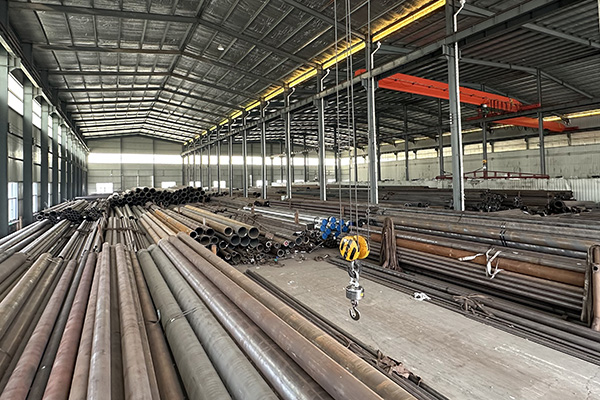

Several Methods to Control the Corrosion of Alloy Steel Pipes
Corrosion is a major threat to the durability and performance of alloy steel pipes, especially in harsh environments such as chemical plants, offshore structures, and high-humidity zones. To extend service life and maintain structural integrity, multiple corrosion control methods are employed in both production and operational phases. Below are the most common and effective strategies:
1. Material Selection and Alloy Design
Choosing the right alloy composition is the first line of defense. Adding elements like chromium, molybdenum, and nickel enhances corrosion resistance:
Chromium improves passivation and resistance to oxidation and rust
Molybdenum enhances resistance to pitting and crevice corrosion
Nickel improves resistance in acidic and high-temperature environments
Selecting high-performance alloys such as stainless steel (e.g., 316L) or low-alloy corrosion-resistant grades based on service conditions is essential.
2. Protective Coatings
Applying surface coatings is one of the most practical corrosion control methods:
Paint coatings: Used for above-ground applications to isolate the pipe from air and moisture
Galvanizing: A zinc coating that offers cathodic protection, commonly used in less aggressive environments
Fusion-bonded epoxy (FBE): Offers excellent adhesion and corrosion protection for buried or submerged pipes
Polyethylene or polypropylene coatings: Applied for pipeline systems, particularly in oil and gas industries
3. Cathodic Protection
This electrochemical method involves applying a current to reduce the potential difference between the pipe surface and surrounding environment, thus preventing corrosion:
Sacrificial anode systems (e.g., zinc or magnesium anodes) are used for buried or underwater pipelines
Impressed current systems apply an external current using a power source to protect large pipeline networks
4. Corrosion Inhibitors
Chemical inhibitors are added to the fluid inside the pipe to reduce corrosion:
Film-forming inhibitors create a protective barrier on the inner wall
Oxygen scavengers are used in boiler or process systems to reduce oxygen-induced corrosion
Inhibitors must be compatible with the transported media and applied in correct concentrations
5. Environmental Control
Minimizing exposure to corrosive elements reduces the corrosion rate:
Dehumidifiers or climate control can limit moisture in storage or processing facilities
Proper drainage systems prevent water accumulation around buried pipes
Reducing exposure to chlorides, acids, or sulfides in processing environments is critical
6. Surface Treatment and Passivation
Chemical or mechanical treatments can enhance corrosion resistance:
Pickling and passivation remove oxides and promote formation of a stable passive layer on stainless or alloy steel surfaces
Shot blasting removes contaminants and prepares the surface for coating
Electropolishing creates a smoother, less reactive surface, especially for sanitary or pharmaceutical applications
7. Proper Handling and Storage
Pipes should be stored in dry, covered areas and handled using non-abrasive tools to avoid coating damage. Protective end caps and tarpaulins help prevent ingress of water or debris that could initiate corrosion.
Conclusion
Controlling corrosion of alloy steel pipes requires an integrated approach combining proper material selection, surface protection, environmental control, and ongoing monitoring. The optimal method depends on the specific service environment, design life, and economic considerations.
References:
NACE SP0169 – Control of External Corrosion on Underground or Submerged Metallic Piping Systems
ISO 21809 – Petroleum and natural gas industries — External coatings for buried or submerged pipelines
ASM Handbook, Volume 13C – Corrosion: Environments and Industries
API RP 571 – Damage Mechanisms Affecting Fixed Equipment in the Refining Industry





